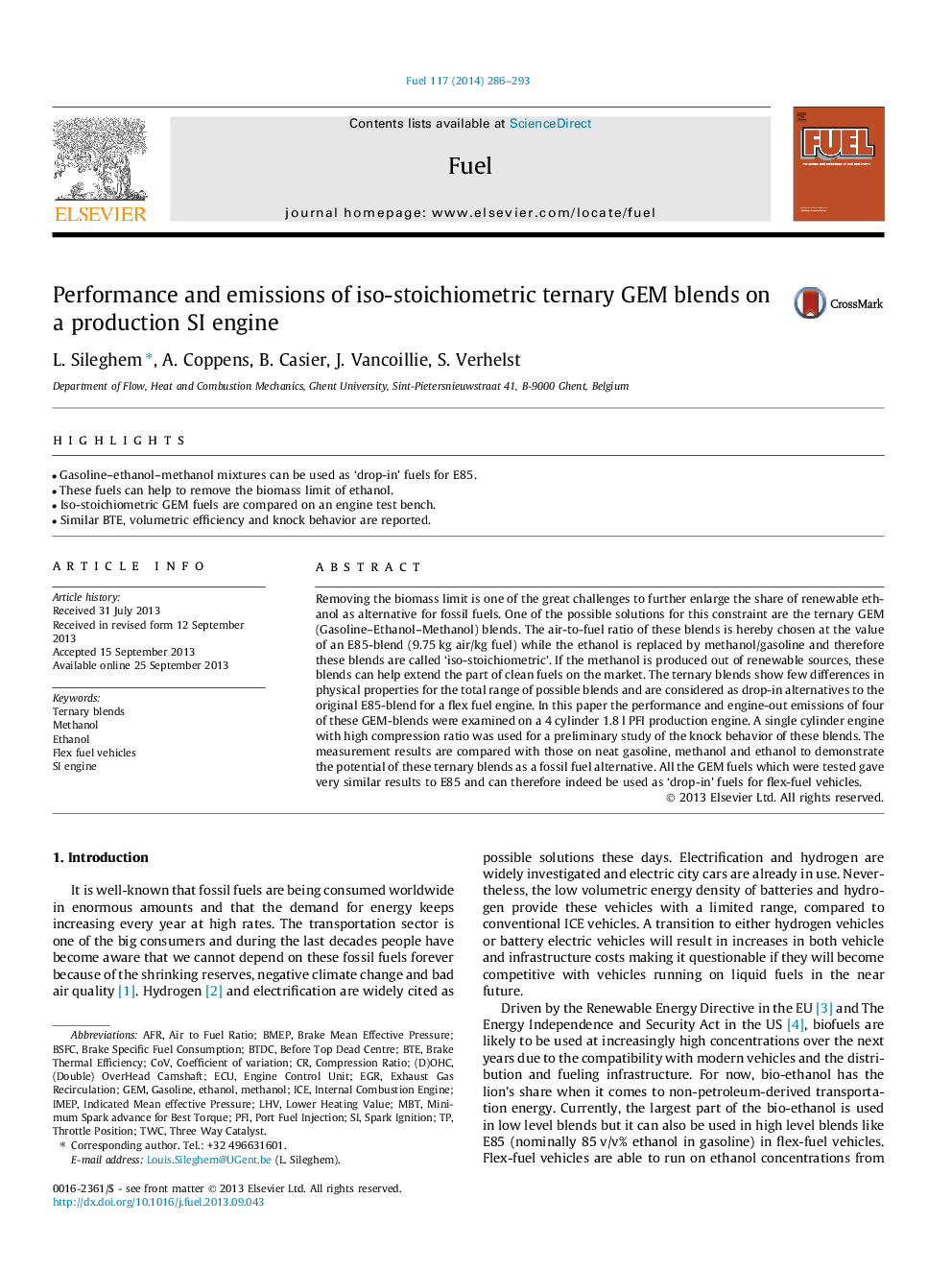| Article ID | Journal | Published Year | Pages | File Type |
|---|---|---|---|---|
| 10271967 | Fuel | 2014 | 8 Pages |
Abstract
Removing the biomass limit is one of the great challenges to further enlarge the share of renewable ethanol as alternative for fossil fuels. One of the possible solutions for this constraint are the ternary GEM (Gasoline-Ethanol-Methanol) blends. The air-to-fuel ratio of these blends is hereby chosen at the value of an E85-blend (9.75Â kg air/kg fuel) while the ethanol is replaced by methanol/gasoline and therefore these blends are called 'iso-stoichiometric'. If the methanol is produced out of renewable sources, these blends can help extend the part of clean fuels on the market. The ternary blends show few differences in physical properties for the total range of possible blends and are considered as drop-in alternatives to the original E85-blend for a flex fuel engine. In this paper the performance and engine-out emissions of four of these GEM-blends were examined on a 4 cylinder 1.8Â l PFI production engine. A single cylinder engine with high compression ratio was used for a preliminary study of the knock behavior of these blends. The measurement results are compared with those on neat gasoline, methanol and ethanol to demonstrate the potential of these ternary blends as a fossil fuel alternative. All the GEM fuels which were tested gave very similar results to E85 and can therefore indeed be used as 'drop-in' fuels for flex-fuel vehicles.
Keywords
LHVGEMEGRTWCIMEPBMEPBSFCPFIECUAFRMBTbTDCCOVEthanollower heating valuebrake mean effective pressurebrake specific fuel consumptionport fuel injectionspark ignitionBrake thermal efficiencyCoefficient of VariationBefore Top Dead CentreMethanolTernary blendsSI engineinternal combustion engineCompression ratioAir to Fuel ratioIndicated mean effective pressureEngine control unitBTEThree way catalystexhaust gas recirculationIce
Related Topics
Physical Sciences and Engineering
Chemical Engineering
Chemical Engineering (General)
Authors
L. Sileghem, A. Coppens, B. Casier, J. Vancoillie, S. Verhelst,
